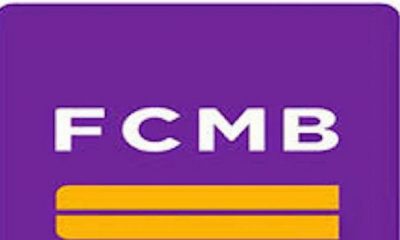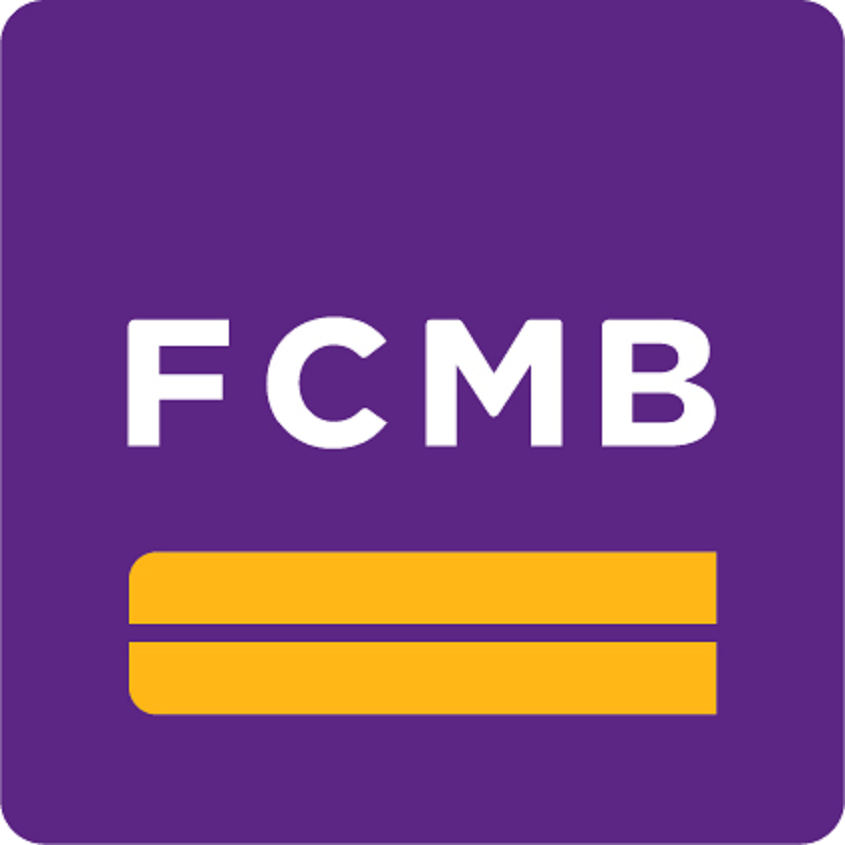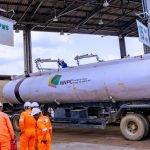Banking
FCMB: Braving the Odds to Deliver Value

Owing to the rising default in loan repayment forced by the COVID-19 pandemic and the declining economy that affected borrowers’ revenue inflow, First City Monument Bank (FCMB) faced an upsurge in credit loss expenses in the third quarter but its management waded through the strain and maintained the elevated profit performance it demonstrated at half-year.
The situation, which affected lenders globally, also forced the bank’s net loan impairment expenses to rise to N5.6 billion quarter-on-quarter in the third quarter ended in September 2020. This pushed up the year-to-date loan loss expenses to more than N13 billion, jerking up the year-on-year rise from 41 per cent at half-year to over 70 per cent at the end of the period.
The resumption of new lending in 2019 after two years of break, occasioned by the Loan to Deposit Ratio (LDR) policy of the Central Bank of Nigeria (CBN), appears to be fuelling the rising asset losses.
Last year, the bank grew the customer credit portfolio by 13 per cent and further growth of close to 11 per cent had happened at the end of the third quarter to N793 billion.
The bank’s management is not letting the asset quality strain to impede the impressive growth record of the bottom line. Instead, it gained speed on profit growth from the half-year position to 30 per cent year-on-year at the end of the third quarter.
FCMB is maintaining the path of growing profit for the third consecutive year though it has remained well below the peak profit figure of N22 billion attained as far back as 2014.
The bank maintained its earnings growth levers on the upbeat, spurred by a step up in interest earnings from 8 per cent growth at half year to 10 per cent increase year-on-year to N112 billion at the end of the third quarter. This was punctured by non-interest income, which shrank from 13 per cent increase at half-year to close flat at N34 billion at the end of September 2020.
Nevertheless, FCMB is still seeing the highest growth rate in revenue in four years in the current financial year. Interest income is growing at the highest rate in for the bank since 2014.
At over N146 billion at the end of the third quarter, gross earnings improved by 7.8 per cent year-on-year, slowing down from over 9 per cent improvement at half-year. This remains the best revenue growth record for the bank in four years against a slight decline in 2019.
Interest cost extended its benign behaviour in the third quarter with a year-on-year decline stepping up from 3 per cent at half-year to roughly 4 per cent to close at N44 billion at the end of the third quarter. Improving interest income with declining in interest expenses are the favourable combination for FCMB in 2020. The share of interest income devoted to interest expenses went down from 45 per cent to 39 per cent over the review period. The positive effect is a top record growth of 21 per cent in net interest income to N66 billion at the end of the third quarter compared to less than 5 per cent improvement at the end of 2019.
The major increase in impairment loss on financial assets however did not let all the increase in net interest income get down into profit. Net loan impairment expenses rose by 70 per cent to over N13 billion at the end of September 2020. The expenses claimed nearly 20 per cent of net interest income against 14 per cent in the same period last year.
With the strength of improving revenue and declining interest expenses, FCMB was able to dilute the impact of rising credit loss expenses and still add some momentum to the bottom line.
The bank closed the third quarter with an after-tax profit of roughly N14 billion, which is a year-on-year growth of 30 per cent – stepping up from 29 per cent record at half-year.
Profit is accelerating this year from 16 per cent growth the bank recorded at the end of 2019. The ability to grow profit more than three times ahead of revenue underscores a gain in profit margin this year. Net profit margin improved from 7.9 per cent in the same period last year to 9.5 per cent at the end of the third quarter. This is the highest net profit margin the bank has seen since 2015. The strength came from cost saving from interest expenses and a moderated operating cost during the review period.
The improvement in interest income reflects the expansion of earning assets with loans and advances growing by N77 billion over the 2019 closing figure of N715 billion and investments rising by N64 billion to over N303 billion over the same period.
Over the nine months of the year, it has grown the size of the balance sheet by N369 billion or 22 per cent to close at over N2 trillion – the strongest growth since 2012. Earnings per share amounted to 70 kobo at the end of the third quarter operations, improving from 54 kobo per share in the same period last year.
The bank remains on track with our full-year expectation that it would retain the key strengths of growing revenue, moderating interest expenses and improving profit margin and stay the course of rebuilding profit for the third straight year in 2020.
Banking
Secure IT, StockMed, 18 Others Make Wema Bank Hackaholics 6.0 Top 20 List

By Modupe Gbadeyanka
The six edition of the Hackaholics of Wema Bank Plc has produced 20 top finalists shared equally between two streams, Ideathon and Hackathon.
The Hackathon finalists are Rapid DEV, Secure IT, Neurafeed, Trust Lock Babcock, Pulse Track, IlluminiTrust, Trust Lock FUTA, Fix Fraud AI, KASH Flow and VOC AI.
The Ideathon finalists include PLOY, Fertitude, VarsityScape, Mama ALERT, StockMed, Chao, All Arbitrate, FarmSlate, Sane AI and Cycle X.
They emerged after a two-day pre-pitch held on December 16 and 17, 2025, for the grand finale slated for Friday, December 19, 2025.
They grand finale of Hackaholics 6.0 will convene the top players in Africa’s tech and innovation ecosystem, creating an avenue for these finalists to not only put their creativity to the ultimate test but also give their solutions visibility to potential investors for additional funding opportunities beyond the prizes to be won.
The prizes to be won for the Ideathon include N25 million for the winner, N20 million for the first runner-up, N15 million for the second runner-up and N5 million each for two women-led teams.
In the Hackathon category, the first to fourth-place winners will receive N20 million, N15 million, N10 million and N5 million, respectively.
The pre-pitch saw the top 43 contenders battle in a game of innovation and problem solving, presenting compelling pitches for a chance to make it to top 10 in their respective streams.
After a rigorous stretch of pitches and presentations, the top 20 emerged, securing their spot in the grand finale of Hackaholics 6.0.
“Hackaholics started off as a hackathon and morphed into an ideation. For Hackaholics 6.0, the sixth edition, we decided to give both the builders of new solutions and the refiners of existing ones, an opportunity to make meaningful impact.
“For us at Wema Bank, we understand that innovation isn’t just building from scratch. Sometimes, it’s looking at what exists and developing new ways to optimise that and create more efficiency. This is the idea behind our two-stream Ideathon-Hackathon structure.
“Every year, Hackaholics shows us just how eager and motivated Nigerian youth are when it comes to exploring creativity and innovation, and we are honoured to be the institution that provides them with the platform and resources to put this drive to good use.
“We toured seven cities, indulged 1,460 participants and discovered hundreds of remarkable ideas; some of which needed some refining and some of which deserved to move to the next stage.
“For those who needed to go back to the drawing board, we provided useful guidance and for the top contenders, we were able to shortlist to the top 43, who proceeded to the pre-pitch. To every participant, Wema Bank is proud of you. This is just the beginning,” the chief executive of Wema Bank, Mr Moruf Oseni, said.
Banking
Customs to Penalise Banks for Delayed Revenue Remittance

By Adedapo Adesanya
The Nigeria Customs Service (NCS) says it will enforce penalties against designated banks that delay the remittance of customs revenue, in a move aimed at strengthening transparency and safeguarding government earnings.
This was disclosed in a statement on the NCS official account on X, formerly known as Twitter and signed by its spokesman, Mr Abdullahi Maiwada, who said the delays undermine the efficiency, transparency, and integrity of government revenue administration.
“The Nigeria Customs Service has noted instances of delayed remittance of customs revenue by some designated banks following reconciliation of collections processed through the B’odogwu platform,” the statement read.
“Such delays constitute a breach of remittance obligations and negatively impact the efficiency, transparency, and integrity of government revenue administration.
“In line with the provisions of the Service Level Agreement executed between the Nigeria Customs Service and designated banks, the Service hereby notifies stakeholders of the commencement of enforcement actions against banks found to be in default of agreed remittance timelines.”
Mr Maiwada disclosed that any bank that fails to remit collected Customs revenue within the prescribed timeline will be liable to penalty interest calculated at three per cent above the prevailing Nigerian Interbank Offered Rate for the period of the delay.
He added that affected banks would be formally notified of the delayed amounts, the applicable penalty, and the deadline for settlement.
“Accordingly, any designated bank that fails to remit collected Customs revenue within the prescribed period shall be liable to penalty interest calculated at three per cent above the prevailing Nigerian Interbank Offered Rate for the duration of the delay.
“Affected banks will receive formal notifications indicating the delayed amount, applicable penalty, and the timeline for settlement,” the statement read.
Banking
First Bank Deputy MD Sells Off 11.8m First Holdco Shares Worth N366.9m

By Aduragbemi Omiyale
The deputy managing director of First Bank of Nigeria (FBN) Limited, Mr Ini Ebong, has offloaded some shares of FBN Holdings Plc, the parent firm of the banking institution.
A regulatory notice from the Nigerian Exchange (NGX) Limited confirmed the development on Thursday.
It was disclosed that the transaction occurred on Friday, December 12, 2025, on the floor of the stock exchange.
The sale involved about 11.8 million shares, precisely 11,783,333 units traded at N31.14 per share, amounting to about N366.9 million.
Mr Ebong, who studied Architecture from University of Ife and obtained Bachelor and Master of Science degrees, became the DMD of First Bank in June 2024. Prior to this appointment, he was Executive Director, Treasury and International Banking since January 2022.
He was previously the Group Executive, Treasury and International Banking, a position he held since 2016 after serving as the bank’s Treasurer from 2011 to 2016.
Before joining First Bank, he was the Head of African Fixed Income and Local Markets Trading, Renaissance Securities Nigeria Limited, the Nigerian registered subsidiary of Renaissance Capital. He also worked with Citigroup for 14 years as Country Treasurer and Sales and Trading Business Head.
He has a passion for market development and has worked actively to drive change and internationalisation of the Nigerian financial markets: foreign exchange, fixed income and securities.
He has worked closely with regulatory bodies such as the Central Bank of Nigeria (CBN) and the Debt Management Office (DMO) in assisting with the development of fresh monetary and foreign exchange policies, to broaden and deepen markets and open them up to international practices.
At various times he has facilitated and delivered courses and seminars on a wide variety of subjects covering Money Markets, Securities and Foreign exchange trading and market risk management subjects to regulators, corporate customers, banks and market participants.
-

 Feature/OPED6 years ago
Feature/OPED6 years agoDavos was Different this year
-
Travel/Tourism9 years ago
Lagos Seals Western Lodge Hotel In Ikorodu
-

 Showbiz3 years ago
Showbiz3 years agoEstranged Lover Releases Videos of Empress Njamah Bathing
-

 Banking7 years ago
Banking7 years agoSort Codes of GTBank Branches in Nigeria
-

 Economy3 years ago
Economy3 years agoSubsidy Removal: CNG at N130 Per Litre Cheaper Than Petrol—IPMAN
-

 Banking3 years ago
Banking3 years agoFirst Bank Announces Planned Downtime
-

 Banking3 years ago
Banking3 years agoSort Codes of UBA Branches in Nigeria
-

 Sports3 years ago
Sports3 years agoHighest Paid Nigerian Footballer – How Much Do Nigerian Footballers Earn






















